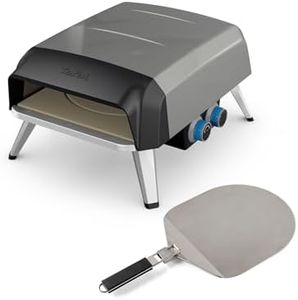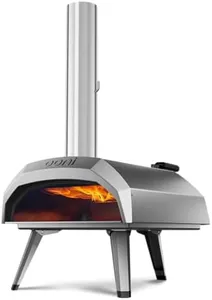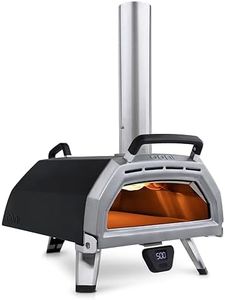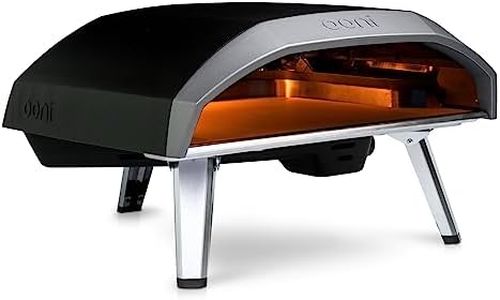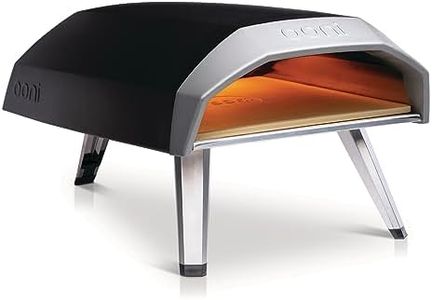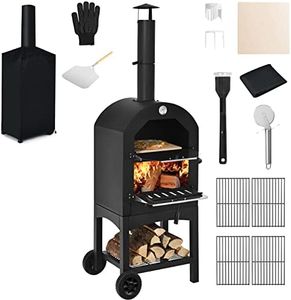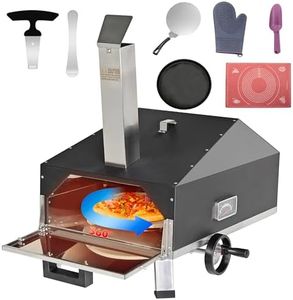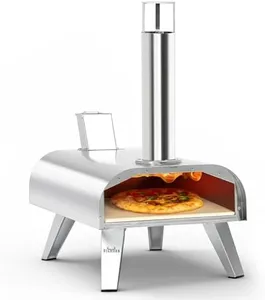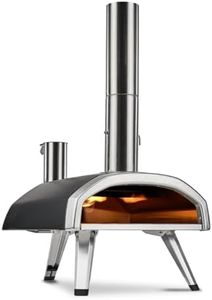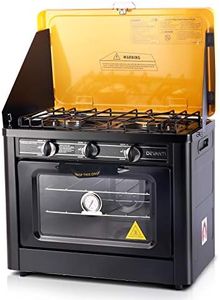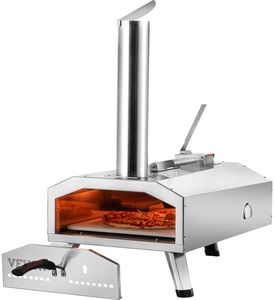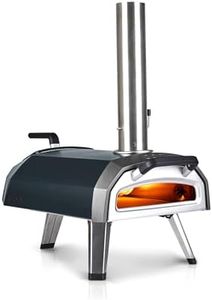We Use CookiesWe use cookies to enhance the security, performance,
functionality and for analytical and promotional activities. By continuing to browse this site you
are agreeing to our privacy policy
10 Best Portable Pizza Oven
From leading brands and best sellers available on the web.By clicking on a link to a third party's website, log data is shared with that third party.
Buying Guide for the Best Portable Pizza Oven
Choosing a portable pizza oven can transform your pizza-making experience, whether you're in your backyard, at a picnic, or heading on a camping trip. The right oven will let you make delicious pizzas anywhere you go, with convenience and ease. To find the perfect fit for you, it's essential to understand the key features that affect performance, usability, and portability. Knowing what each of these features means and how they relate to your intended use will help you make a confident and informed decision.Fuel TypeFuel type refers to the source that powers the pizza oven, such as wood, gas, charcoal, or multi-fuel options. This is important because it affects the flavor, heat-up time, convenience, and where you can use the oven. Wood-fired ovens give a smoky flavor and authentic experience but require more skill and time to manage. Gas ovens are easier to control and heat up quickly, making them convenient, but lack wood-smoked flavor. Charcoal offers a balance, with some smoky taste and moderate convenience. Multi-fuel ovens add flexibility by allowing more than one fuel type. If you value convenience and quick setup, gas might be best; if you want authentic taste and don’t mind tending to the fire, wood or charcoal could be ideal.
Maximum TemperatureThe maximum temperature indicates how hot the oven can get, typically ranging from 500°F (260°C) to over 900°F (480°C). This matters because genuine Neapolitan pizzas require intense heat for a crispy crust with a tender interior, cooking in just a minute or two. Lower temperature ovens cook slower and might not achieve the same results. For fast, crispy pies like in a pizzeria, look for ovens with higher maximum temperatures. If you prefer cooking a variety of dishes or thicker crust pizzas, a lower top temperature may suffice.
Heat-Up TimeHeat-up time is how long the oven takes to reach its cooking temperature after you ignite it. This can vary from 10 to 30 minutes depending on the oven and its fuel. A shorter heat-up time means you can make pizza faster and with less waiting, which is ideal for quick meals or impromptu gatherings. If you enjoy a relaxed cooking process and don’t mind waiting, a longer heat-up time may not be an issue. Those who want convenience and quick results should look for ovens advertised with shorter heat-up times.
Cooking Surface SizeCooking surface size describes the dimensions of the area where you place your pizza, typically measured in inches or centimeters. This matters because it determines the maximum size of the pizza you can bake at once, and how many can be cooked at one time. Ovens with a small surface are lighter and more portable, suitable for small groups or solo use, but limit pizza size (often up to 12 inches). Larger surfaces let you make bigger pizzas or cook more food at once, which is better for families or gatherings but can add to weight and bulk. Consider how many people you’ll cook for regularly and whether portability or capacity matters more to you.
Portability (Weight and Dimensions)Portability is determined by how heavy and compact the oven is, affecting how easy it is to carry, store, and set up. Lightweight and smaller models are simple to move around and fit easily in cars or small storage spaces, perfect if you’ll use the oven for travel, camping, or frequent moving. Heavier and bulkier ovens may offer more features or capacity but can be hard to transport. Choose a size and weight that matches how and where you plan to use your oven most often.
Build MaterialBuild material refers to what the oven is made from, such as stainless steel, ceramic, or a mix of materials. This affects durability, heat retention, and how easy it is to clean. Stainless steel is tough, rust-resistant, and heats up quickly; ceramic keeps heat longer, which is good for even cooking but can be heavier and more fragile. If you value longevity and easy upkeep, stainless steel is a solid pick. For those seeking fantastic heat retention, ceramic might be an option, but only if portability is not your top concern.
Ease of Use and CleaningEase of use includes how simple it is to assemble, light, and control the oven, as well as how easy it is to clean afterward. Some ovens have straightforward controls and easy-access cooking surfaces, making them great for beginners or those who don’t want to fuss with complicated setups. Ovens with removable parts or non-stick surfaces simplify cleaning, saving you time and effort. If you prefer a hassle-free pizza night, focus on models known for being easy to operate and maintain.
